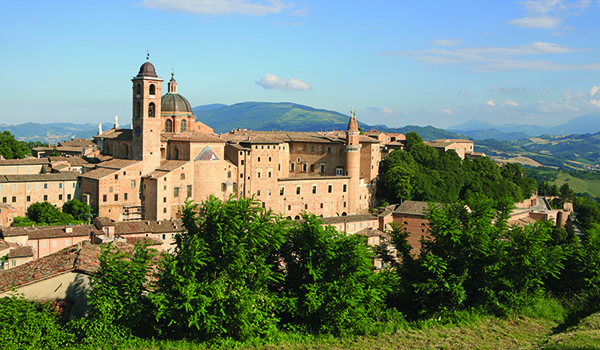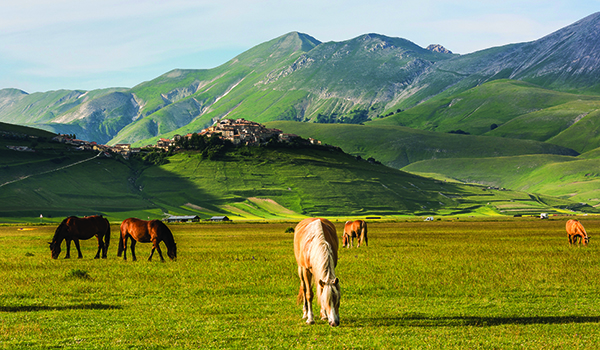A wealth of glorious sights, sounds and splendidly diverse landscapes awaits any traveller who ventures to Le Marche to explore its many treasures
Le Marche is as steeped in history as any other region of Italy, but with the inhabitants enjoying a relaxed attitude and way of life, the region’s tourist trail is less stressful than the usual routes through Italy’s thronging museums, churches and castles.

There is evidence of settlers here from as far back as 6000 BC, while the Piceni, one of Italy’s earliest tribes, are the first recorded inhabitants. The Greeks were to pass through and leave their influences too, while the Gauls were a less welcome presence in this fertile stretch of land between the Adriatic Coast and the Apennines, using ports like Ancona as their gateway. The might of Rome absorbed the kingdom in the 3rd century BC, but after the Empire’s powers waned, Le Marche was occupied by Lombard and Byzantine settlements. The region was then to suffer a prolonged period of relentless warfare as the power struggles of the Papacy, the Holy Roman Emperors and the ruling families, such as the Borgias, marked the landscape.
These conflicts continued until the 19th century when, in 1860, after a decisive battle against the Papacy, Le Marche was absorbed by a newly unified Italy. The result of all these centuries of discord and diverse occupations is a land that reveals a rich vein of remains, festivals and traditions, and some of the greatest treasures of the Renaissance.
A voyage of discovery
The sights and marvels of Le Marche are an experience for the traveller to cherish and look forward to revisiting time and time again. The highlights of your itinerary should include the following…
Ancona is the regional capital and for centuries has been the hub of the region for travellers – and invaders – and it remains as important today as it was many centuries ago when it was a settlement for the Piceni. Among its many attractions is the Basilica of San Ciriaco, a Romanesque church with Byzantine and Gothic features, and the Museo Archeologico Nazionale delle Marche, home to a collection of ancient Greek pottery. An annual jazz festival also takes place here (www.anconajazz.com), one of several events in a region known for its musical connections.
Moving inland, Macerata is renowned for its international open-air opera festival every summer, while the town’s most striking piece of architecture is the imposing, two-tiered Renaissance arcades of the Loggia dei Mercanti on the central Piazza della Libertà.
Travelling north, up the coast from Ancona, Pesaro is the next major city, the birthplace of the composer Gioachino Rossini and site of his annual opera festival. This is a popular beach resort, but culture vultures will find museums and churches aplenty, including the 15th-century Palazzo Ducale. The ancient town of Fano lies just south of Pesaro, its most significant site being the Arco d’Augusto, a 1st-century Roman arch.
Renaissance treasures
Travelling west away from the coast you will find the fairytale city of Urbino, one of the most beautiful hilltop towns in Italy. Its heyday was from the 12th century and through the golden age of the Renaissance under the Montefeltro family.
Many splendid art treasures can be found in the city’s churches and museums. Among its most impressive buildings is the Palazzo Ducale, with its towering turrets, a perfect example of an early Renaissance palace. It is home to the Galleria Nazionale delle Marche, one of the most important collections of Renaissance paintings in the world. The birthplace of Raphael, the painter’s 15th-century house also remains as a shrine to his life.
Moving south again, the Santa Casa di Loreto is a well-known Catholic place of pilgrimage as it is said to be the house where the Virgin Mary was born. The mountains dominate the area and, moving inland, a journey into the National Park of the Sibillini Mountains will bring rich rewards, with its stunning scenery and colourful wildlife

